Abbott and Costello's 1938 Radio Debut on the Kate Smith Hour
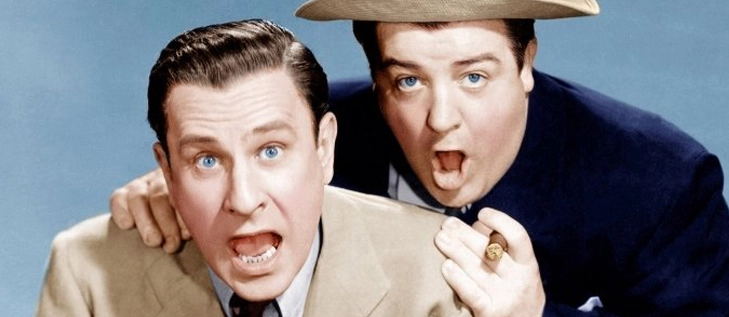
A year and a half ago a couple of comics stepped up to the microphone of the Kate Smith Hour for a 10-minute, one-appearance guest performance. No one -- with the possible exception of the comics themselves -- had any idea that their appearance was anything other than the simple guest performance it seemed, for their comedy was rowdy, hilarious, low-born, and to use their own words, "the hokiest of hokum."
Bud Abbott and Lou Costello are still making their weekly appearances with Kate Smith, and this season are answering wider demands upon their services by bringing their rowdy comedy to the New York stage in that hit show Streets of Paris, as well. Which may go to show that we haven't changed our entertainment tastes much since the custard-throwing days of Mack Sennett. More likely, however, it proves that these two rascals of low-born repartee were exactly right when they maintained that, in times of stress, people like to have a little comedy that isn't so subtle and modern that they have to strain their gray matter to catch the point. What these two lads deal out is comedy that slaps you in the face.
For example, look at these lines from a recent show:
Abbott: Costello, do you realize you've said hello to everybody on the program except Ted Collins. How did you come to miss him?
Costello: How did I come to miss him? He ducked! I'd have given him two black eyes if I hadn't been stopped.
Abbott: Who stopped you?
Costello: Ted Collins.
Or the time Abbott and Costello opened their dog nursery:
Abbott: What did you do with these newborn puppies?
Costello: I put them in the dog incubator.
Abbott: We don't have any dog incubator.
Costello: No? Then what's that can in the backyard marked "Deposit litter here'?
On another occasion this irrepressible pair went in for football, and to Bud's dismay Lou got mad and quit the team:
Costello: I'll take my football with me, too. You can use Ted Collins.
Abbott: Why should I use Mr. Collins for a football?
Costello: Because he's thick-skinned, tight-laced and a bag of wind!
But the prize gags of the duo always end with the now famous line:
Abbott: Suddenly the lion roars! He leaps for you! It takes the two of us to kill that lion!
Costello: You're wrong. It will only take one of us. I ain't going to be there.
Abbott: Isn't that something! I figure out a scheme to make some money. Am I selfish about it? No. Did I try to hunt lions alone? No. I'm willing to let you capture the lion and what thanks do I get? You want to run away.
Costello: I'm a bad boy!
The phrase has caught on. Kids repeat it in mock Costello tones, and school principals all over the country admit that Abbott and Costello, through their constant repetition of the line, have made children more "behavior-conscious." Public School 17 of Manhattan even decorated the pair with gold medals in recognition of their salutary effect on its pupils. But while the phrase is well known, it has not been repeated as much as listeners think. As a matter of record, the "I'm a bad boy" gag is used only once in each broadcast.
Francis Chase Jr. in Radio Guide, February 9, 1940
Why Vladimir Horowitz Stopped Performing in the 1930s
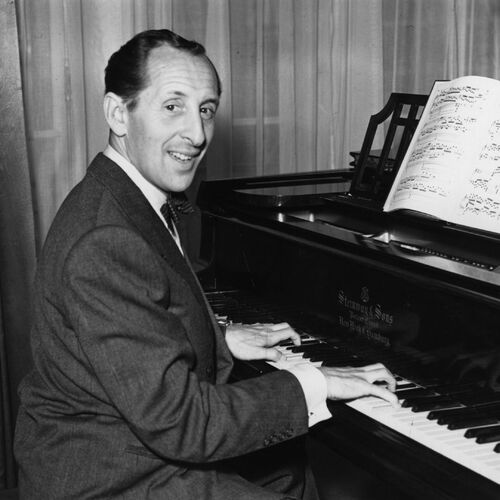
Up in Riverdale, New York, there lives a small five-year-old girl named Sonia, who from all accounts is already very much of a personality. She knows what she wants when she wants it, and is never at a loss before adults, most of whom agree that she's going to need plenty of courage, staggering under the stupendous burden of two such names as Horowitz and Toscanini. For her father is Vladimir Horowitz and her grandfather is Arturo Toscanini.
Her father regards with envious admiration and some degree of astonishment her superb self-confidence. It is a quality that he has never enjoyed to any great extent. In spite of being acclaimed as the Liszt and Rubenstein of the younger generation of pianists, he still blushes easily, although he has no false modesty and is quietly aware of his status as an artist.
Until his advent some 12 years ago, music lovers sadly shook their heads and declared that the golden days of piano playing were on the decline. True, there were Paderewski, Hofmann, Rosenthal, Lhevinne and Bauer. But they already belonged to an older generation. Where were the young ones to take their place? Then a slim, dark 28-year-old Russian slipped onto the stage one night and plunged into the thunderous chords of the Tschaikovsky B flat minor piano concerto. At the first notes, spines stiffened in the audience, heads turned, dumbfounded glances flew around the hall. This was something! The next morning the hard-boiled music critics went wild with enthusiasm.
Season after season Horowitz returned in triumph. Then abruptly, a few years ago, he stopped playing. Rumors were plentiful -- he was ill, would never play again. In Switzerland, Horowitz lay stretched on a bed of wracking pain, stricken suddenly with phlebitis. It took him two long years to recover, two years far away from concert halls, cheering audiences and applause. For the first time he was able to regard music objectively. All the knowledge that he had acquired during his years of intensive concertizing had a chance to soak into his soul. And when he emerged from the sick room to resume his career, he had developed into a mature and deeply perceptive musician as well as a technical magician.
Much of the ripeness and splendid surety of his present playing is the result of a successful and happy marriage. The former Wanda Toscanini, daughter of a notoriously temperamental father, knows the quirks and vagaries of artists. She sees to it that Horowitz has the privacy he needs and the company he enjoys. Years ago he resembled a haunted poet, with a thin sad face and mournful eyes. Now he has filled out, goes in for dashing checked jackets and brilliant neckties and is well on the way to becoming a glamour boy.
He and Wanda talk French, because her Russian is sketchy and his Italian is picturesque but meager. His English, however, is better than it once was, when he solemnly acknowledged an introduction to the president of the United States with a handshake and the whispered words, "I am delightful."
V. Vidal in Movie and Radio Guide, March 30, 1940
My Second Childhood, by Fanny Brice
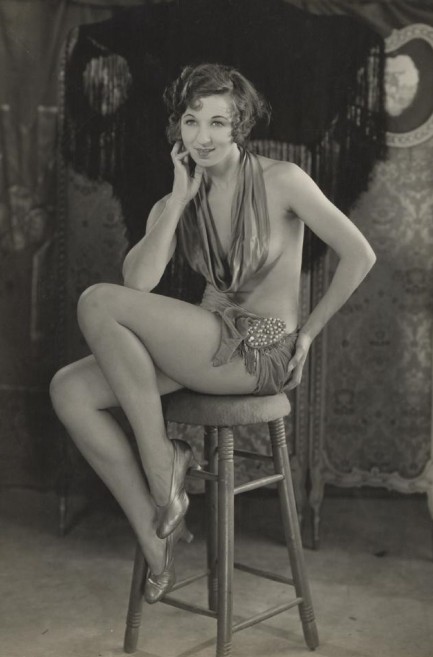
Most people start out as children and grow up to be adults. Me, I'm different. I started out as a grown-up and now I'm a child. At least, I'm a child to millions of radio listeners each Thursday night on NBC's Maxwell House Coffee Time.
While I'm doing the characterization on the air, I really feel like the 7-year-old brat that Baby Snooks is. Snooks reminds me of a childhood that I never knew. The first five years of my life were spent in New York City's lower East Side, where childhood is only a fairy story.
I never had a chance to be a child there. In the first place, I had an above-average curiosity. Why this? Why that? My questions went unanswered. My parents were hard at work and there were three other children. Life to them meant bread and potatoes -- not questions and answers. With Snooks now, it's just the opposite. When she asks questions, she gets answers. She's spoiled. Very spoiled. I smile wistfully at that. In a poor family, you don't get spoiled. I guess I spoil Snooks nowadays the way I wanted to be spoiled as a child -- and wasn't.
At seven, I had decided to become an actress. It was all an outgrowth of my brother's and my frequent trips to a neighborhood theatre. While the house was being aired out in the morning, Lew and I would sneak in and lie flat on our stomachs between the seats until they closed the doors again.
Then we'd hie ourselves up to the balcony, to wait there for the paying customers and the show. That wonderful world of make-believe stirred our imaginations to such an extent that we, too, wanted to act.
The only stage we could find, however, was a curb-stone. We started singing for pennies with the newsboys -- who, in those days, used to sing and dance on street-corners for the pennies of passers-by. These kids gave me my first singing lessons and, believe me, they knew all the tricks. If you think that prying change loose from a hurrying crowd is easy -- try it!
At the age of thirteen, I made my first appearance behind the footlights at an amateur night. The Keeny Theatre in Brooklyn had a weekly amateur night -- hook and all -- and a bunch of the kids with whom I had been singing on the street, were going to compete for the longed-for cash prizes.
I decided that I had to see them perform. But the smallest admission charge was 25 cents! I worked hard to get that quarter. I sewed for hours, making two dresses for a neighbor's kid. But, when I got to the theatre, all the cheap seats were gone. The only ones left cost 50 cents. I was utterly heartbroken.
My friends, however, solved my problem -- and unknowingly started me toward a theatrical career -- by sneaking me backstage, telling the stage manager that I was an amateur. Well, I actually was, wasn't I?
Then, before I knew what was happening, I was pushed out on the stage myself. I had to do something, so I began to sing "When You Know You're Not Forgotten By the Girl You Can't Forget." It must have been my homely awkwardness that got the audience. In the middle of the song, pennies and nickels and dimes came sailing onto the stage. I didn't miss a single copper -- and I won the first prize of $10.
It was such easy money that I started making a career of amateur nights. I guess I was what you might have called a "professional amateur," because I sometimes made as much as $50 dollars a week at these performances.
My first steady job was as a jack-of-all-trades in a movie house. I sold tickets, played the piano, sang, and helped out in the projection room when another pair of hands was needed -- as they were almost constantly -- in those early days of the movies.
While there, I heard a chorus call for George M. Cohan's Talk of New York. I got a job but was fired almost immediately, when they discovered I couldn't dance. That didn't stop me. I joined a stock company and, on my return to New York, got my first big break -- a job with Hertig and Seamon's Transatlantic Burlesquers. I learned how to dance then.
My mother had made me lots of lovely shirtwaists. I showed them to the chorus girls and suggested that I swap the blouses for dancing lessons. By the time I'd learned one simple routine, I was down to one shirtwaist. But I did get a job in the chorus.
I worked myself up to the first line and from there went into a musical show, The College Girls, where I played the soubrette. It was there that Ziegfeld talent scouts saw me.
A week later, I had a Ziegfeld contract in my pocket, and, at the age of 18, made my first appearance in the Ziegfeld Follies, as a chorus girl and "bit" singer. I guess I was a hit. At least, I ad-libbed 11 encores at the first performance.
It was during a between-Ziegfeld-shows hiatus, while I was in vaudeville, that Baby Snooks was born.
As part of my vaudeville act at that time, I did a burlesque of the song "Poor Pauline," singing it in different dialects and as several celebrities of the day might do it. Then, at a party one night, I sang the song as a very young child would sing it -- with wide eyes, exaggerated mouth, feet spread apart, and coy gestures.
The impromptu characterization was a hit. We named her Babykins. But she was temporarily forgotten when I returned to the Follies.
Ziegfeld gave me a new song to sing that year. It was "Mon Homme," a French song for which Channing Pollock had written English lyrics. Long known as a comedienne, a funny-looking girl with lusty lungs and a comedy dialect, I suddenly became famous for singing the very serious "My Man."
It wasn't until many years later that Babykins, whom I had since renamed Baby Snooks, appeared on the Broadway stage. Playwright Moss Hart wrote the first real routine for Snooks, but only after the late Dave Freedman had shaped the characterization did Baby Snooks, as we know her today, make her first appearance before a public audience. That event occurred during the Ziegfeld Follies of 1932.
In 1938, when I went to Hollywood to make a picture for Metro-Goldwyn Mayer, I was asked to guest on the Good News program (forerunner of the present Maxwell House Coffee Time). What should I do? Instead of a song, I suggested Snooks. The characterization went over, and I was signed as a regular on the weekly broadcasts.
The reason for the success of Snooks? I guess it was because parents saw little bits of their own children in her continual questions. Or maybe because their own offspring seemed like angels after Snooks' pestiferies.
You see, Snooks must only do what the average child of seven would do -- without being too fresh or unreal. In appearance, she has the face of a mischievous cherub -- happy and smiling, but curious about everything. Snooks also has a big mouth -- just like mine. And when she cries, the rafters shake. That is the basic Snooks. But, through the years, her original character has been added to, from a hundred different sources. Since my own children, Frances and Bill, have grown up, other youngsters -- complete strangers, perhaps -- have contributed to Snooks.
Children are my hobby. I watch them in drugstores, getting sodas, in the five-and-ten, stretching their pennies over the fabulous displays at the toy counter; and on the streets. I even collect their artwork. I now have a collection of more than a hundred paintings and drawings, done by children all over the world. About fifty of these pictures are now being shown at museums throughout the country.
My other pet hobby and avocation is interior decorating. Even that has Snooks in it. I like to design the kind of rooms a child will feel at home and comfortable in. A room planned for a child is full of warmth and happiness. I dabble in painting, too, using a child's simple style.
But it's Snooks who keeps me young. She has the direct approach to life. She keeps me warm and human.
As long as there are children, there will be a Baby Snooks. Is there any better way to have a second childhood?
Fanny Brice in Tune In, May 1944
George Hall and His Orchestra, Live from the Hotel Taft
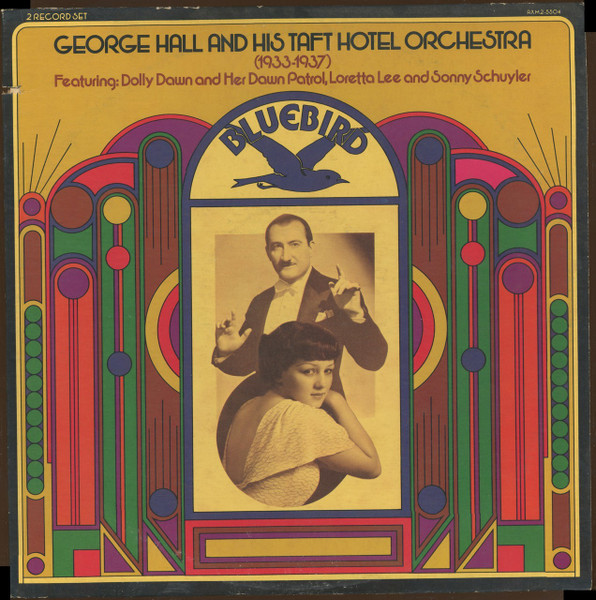
George Hall leads the popular dance orchestra in the grill of the Hotel Taft. His band broadcasts 11 times a week -- which means that it is heard more often than any other band on the air. Noon, night and morning its rhythms and harmonies are carried into all the cities and all the towns and the smart country hamlets where the Columbia Broadcasting System bears romance and inspiration to the organdied girlfriends of tuxedoed youths.
It is a very good thing indeed for the egos of the tuxedoed youths that the girlfriends can only hear and cannot see George Hall leading his orchestra -- although George, being the fine fellow that he is and married besides, would never do the girls any harm -- or good, as you will.
George stands over six feet in height. His shoulders are broad, his hips are narrow, his waist is slim. He wears his jet hair sleekly combed and it glistens handsomely above his seashell complexion (he would go wild over that description). He has a little mustache, carefully waxed and pointed, teeth that flash and eyes with both fire and the dreaminess of his Spanish and Italian temperament.
Interviewing Hall was a difficult assignment, for he sat back smoking a long, evil looking cigar as black as a racketeer's income tax record, and inwardly froze.
"What," he demanded, "is there to say about me? My band plays here for luncheon, dinner and supper -- and then I go home. After all, what else is there?"
It was not an encouraging start. If the man would not talk about himself, what in truth was there to say? However, something had to be said. With a graceful gesture of long artist's fingers, Hall flicked an ash off his cigar. Ah, the cigar!
"That," it was suggested, "must be a strong smoke."
"It's a very good smoke," he replied, looking at the formidable contrivance affectionately.
"What brand," it was asked in a floundering way, "do you smoke?"
"Any brand," returned Hall. "Touring the country, I got over being squeamish about brands. Every section has its own favorite brands. I smoke 20 a day."
Twenty a day! He must, it was hinted, have a powerful constitition. He did, he agreed. It required some time and more desultory conversation to find out where he had acquired it. Then it developed he had been a schoolboy football and basketball star at Brooklyn Boys' High.
"It's an interesting thing," he remarked, characteristically avoiding recital of his prowess on courts and gridiron, "every fellow on that basketball team went into music. Felix Bernard composed Dardanella. You remember Dardanella. Ray Sherwood is writing songs. Bert Ruel is a pianist. And Bert's brother Jimmy has been coach for Morton Downey, Belle Baker, Eddie Cantor and lots of others."
He sat back with that outburst, and after a pause, remarked, "I'm not used to being interviewed. What can I say?"
He was very earnestly modest about it, and quite sincerely embarrassed. There was only one thing to do. The Columbia Broadcasting System had his record typed out on mimeographed sheets. Out came the record.
Now what was this about his middle name being Flag? Oh yes. He had been born on Flag Day, and so his parents had named him Flag. It was a good thing it had not been February 14. That line of talk did not seem to be moving in any special direction. Wasn't his name George Hall? No, as a matter of fact it was George Passilia.
"My father," he explained on painful questioning, "is Joseph Passilia. He played the first violin for Victor Herbert for many years. My mother was Vita Ciaccio before she was married. She had a lovely contralto voice. I was the only musical child. I have three brothers: a doctor, a schoolteacher and a bank clerk. And two married sisters."
And that was that.
Little by little, and chiefly through the prompting of the mimeographed record, it came out that George had started playing the piano by ear at the age of six. How had it happened? Oh, just naturally. The home was a musical one. The piano was there. So-o-o, as Ed Wynn would remark. Unlike the young Liszt, George had not had to hide in an attic to practice. And his father, hearing him, had taught him the violin.
So it came to pass that when he was 14, George Hall was sitting in Victor Herbert's orchestra at his father's playing elbow, learning by example and experience how to keep his resined horsehair steadily midway between delicate bridge and long ebony fingerboard and absorbing the spirit and technique of good music. And at sixteen, he was leading the orchestra at the Imperial Hotel in Brooklyn.
"It's a funny thing," mused George Hall, becoming alarmingly loquacious about himself for a few minutes, "but you've heard about so many barbers and butchers and lawyers and even bootleggers making their kids practice the violin or the piano and wanting them to become great artists. Well, my father wanted me to be a doctor."
And being a dutiful Latin son, George went to Cornell Medical School, which is, perhaps, where he acquired that ingratiating bedside manner so evident when he sits at a dinner table dangling pince-nez at the end of a black cord and speaking, when he is not conscious of being interviewed, in his so soothing voice.
Working his way through Cornell, however, George Hall became a Broadway figure summertimes with his orchestra. Then the war came along. George joined the Navy and organized bands at the Great Lakes Training Station for overseas service. After the war, it looked like a long, hard grind ahead to become a medical man. A musical career was at hand. George seized it.
"That," said George Hall, relaxing with evident relief, "is how I became a musician. I have been one ever since."
The interview was at an end, and there was no mistaking the fact that George was very happy about it.
"Will you have a cigar?" he offered gratefully, as mimeographed record and copy-paper notes went into hiding. But it was another of those long, black, startling-looking affairs. The offer was declined with thanks.
Leo Fontaine in Radio Guide, June 4, 1933
Book Covers All 1,693 Episodes of Mr. Keen, Tracer of Lost Persons
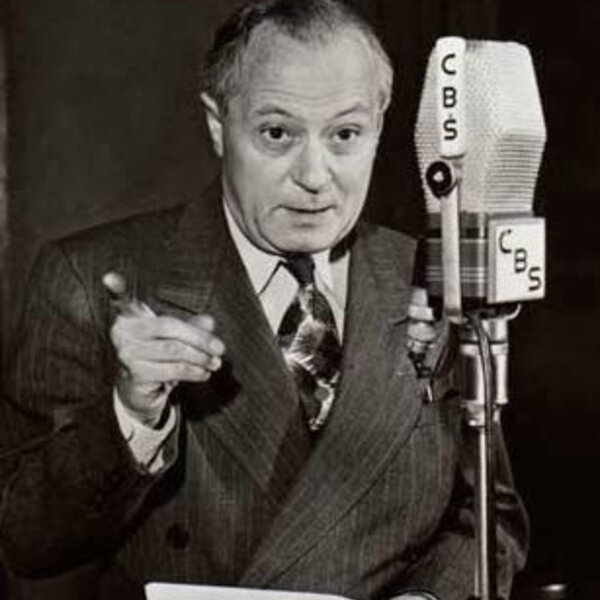
In his previous books, author Jim Cox has written about two of radio's most prolific producers (Frank and Anne Hummert's Radio Factory), the last decade of the golden age of radio (Say Goodnight Gracie) and several radio programming genres (Radio Crime Fighters, The Great Radio Audience Participation Shows and The Great Radio Soap Operas).
In his current book, Jim focuses his considerable research and writing talents on a single series that was one of his favorites when he was growing up: Mr. Keen, Tracer of Lost Persons. As readers have come to expect from any Jim Cox effort, he has intensively and thoroughly researched his chosen subject, uncovered more new information and written a highly entertaining and enlightening volume on radio's longest-running detective series.
The book starts with Chronology: A Mr. Keen Almanac, which is a convenient timeline for the series providing information in an outline format, including dates, days and times of broadcasts; primary cast and crew; networks; and sponsors.
In the chapter The Aural Sleuth: Murder and Mayhem on the Air, Jim discusses the popularity and significance of the private investigator during the golden age of radio.
The origins and evolution of the Mr. Keen character are examined in the next three sections. The Origins of a Supersleuth covers the literary lineage of Keen in the writings of Robert W. Chambers and how Mr. Keen was adapted for radio by Frank and Anne Hummert. In Chambers' writings the kindly old investigator was a matchmaker for the wealthy. The next two chapters describe how Mr. Keen evolved over time on the radio: starting as the Tracer of Lost Persons in 1937 and by the mid-1940s transforming into a more intense, relentless chaser of murderers.
The dictates of the Hummerts often led to unintentionally humorous situations and dialogue on the series and are mentioned in the chapter Funny Business. These gaffes lead to satires on the series by the comedy of Bob and Ray: Mr. Trace Keener Than Most Persons and Mr. Treat, Chaser of Lost Persons. These Bob and Ray sketches of the series are also addressed.
Many entertaining anecdotes about cast and crew members are included in the chapter Hired Guns. There are also numerous biographical sketches of the writers, lead actors, directors, announcers, sound effect artists and musicians. The advertisers of Mr. Keen are discussed in Sold on Radio.
Collectors will be intrigued by the radio episode guide for the 1,693 installments of Mr. Keen. There is plenty of factual information: the broadcast dates and times, episode numbers and titles, episode plot summaries and so forth, but there is so much more! Jim mentioned at the beginning of this section that he attempted "to craft an expansive, engaging and useful episode guide." I can tell you that he has definitely succeeded. As I read Jim's episode summaries from the years of the thrice-weekly serial format, I found myself following Mr. Keen and Mike Clancy. Not only could I see them in my mind's eye as they conducted their investigations, I could also hear them.
Jim Cox has provided radio program enthusiasts with several of the finest works on various aspects of our hobby. With the publication Mr. Keen, Tracer of Lost Persons: A Complete History and Episode Log of Radio's Most Durable Detective, he has added another superlative volume to the body of old-time radio literature.
Stewart Wright in Return With Us Now, August 2004
Bill Meredith, the Playwright of the Prairie
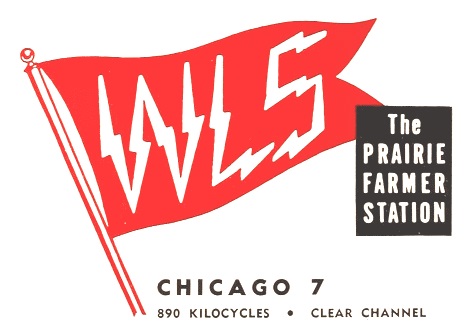
When Bill Meredith and his best girl, Virginia Bauer, walked back and forth to Wheaton High School, they used to look longingly at a tiny house -- their dream house, they called it. Bill was planning to be an architect then and he saw the possibilities the little house had.
Not many folks have their dreams come true when they are only 25 years old, but last fall shortly after Bill's 25th birthday, October 9, he and Virginia moved into their dream house, which had just been remodeled.
That was just a little more than a year after Ralph Waldo Emerson had played the wedding march in the Wheaton church for the marriage of Virginia Bauer and William Meredith.
Born in Chicago, Bill moved to Wheaton when he was seven and attended grammar and high school there. A high school teacher encouraged him to write one-act plays, and during his first two years he wrote several that were presented by the dramatic club. His first play was bought by a Chicago publishing house for $25.
At the end of his sophomore year in high school, Bill's English teacher suggested that he write a longer play to be used as the Junior class play. Bill wrote a three-act play which he titled The Ladybird Tries His Wings. Bill doesn't think he'll ever forget that moment between the second and third act, when the author was called in front of the curtain to accept a bouquet of flowers.
In spite of his literary activities in high school, Bill was determined to become an architect and studied architectural engineering for two years at Iowa State College in Ames. In 1932 and '32 no jobs seemed to be available for an inexperienced young architect, so Bill spent many hours listening to the radio, particularly the dramatic shows.
The World's Fair of 1933 was preparing to open its gates, and using it for a setting, Bill wrote a thrilling serial called Murder on the Midway that ran for 20 weeks on WHFC in Cicero. At the same time Bill was writing, producing and acting in another serial, Broadway Bound, on the same station.
In Wheaton he happened to see George Biggar, who suggested that Bill write a show with a midwestern flavor. Prairie Home was auditioned on April 13, 1933, and ran for more than a year. Cliff Soubier, Marie Nelson and other well-known radio players took part in its once-a-week productions. Bill was writing the show at home when it first went on the air. In October of that year Bill joined the WLS staff and his first job was to be Eddie Allan's understudy as Little Theatre host. He started writing more and more continuity and moved into the writers office with Martha Crane, Wyn Orr, Julian Bentley and Fleming Allen.
Bill has written many Homemakers' plays. One of his first ones, Something for Easter, was produced for the third time this year.
In addition to his duties as continuity editor, Bill writes the Morning Minstrels script, produces the Pa and Ma Smithers program and helps Pat on the Radio Skule for New Beginners Jes Startin'.
From Stand By, April 18, 1936
The Story of How Gus Van Met Joe Schenck
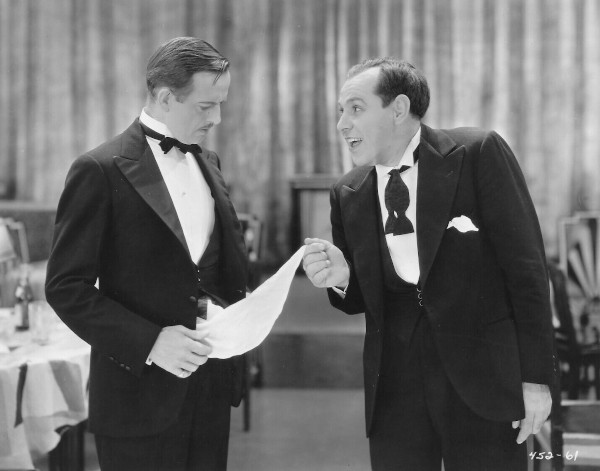
Some men who sing direct their song to the girl they love. Some sing to a fancied ideal. Many carol out of sheer romance. A few sing solely for material reward. But different from any of these is the emotion which inspires the songs of Gus Van, interlocutor on the NBC Greater Minstrels.
Van sings to a shadow -- the wraith of his former partner, Joe Schenck, whom he loved with a robust, masculine affection bred by 21 years of association and by an arm-in-arm battle which led them from a sordid beginning to a height where they stood distinguished as the greatest two-man team in the theater.
"I am as uncertain as every mortal about what happens to the soul after death," Van confesses. "But if I didn't know absolutely that Joe Schenck's spirit was listening to my every note -- that he is keeping me in pitch, so to speak -- as he always did when we were partners, I would never make another public appearance. I would go back to railroading. That's the way I made my start in the world, and I could do it again if I had to."
There is an impressive sincerity about Van's loyalty to that ghostly ally. He made his great success with Schenck and truly believes that he couldn't progress a foot if he didn't feel that in some shadow-land Joe is harmonizing with him that amazing voice of his, just as he did in the days when they were making $185 a week, the weeks they could find work -- or when they were making $5,000 a week and couldn't find enough weeks in which to play.
Of course you've heard the old, old press story about how the boys were streetcar employees who used to get together in the car barn nights and practice their vocalizing. The story has been prevalent for years, and the famous team just let it go at that. And it is a good story except for two important details. Joe Schenck wasn't a singer when he met his future partner, and since he was only 16 years old when their paths crossed it is obvious that he couldn't have helped to man a streetcar.
The story of their meeting has a touch of humor in it -- although memories keep Van from smiling when he tells about it.
Gus, a Brooklyn boy, had worked for the traction company but his flair for singing sent him into places where people paid to hear their favorite tunes. He had no knowledge of vaudeville or the stage. Neither did he have the background for an immediate plunge into the theater. In his own words, he was a plain mugg; and like Irving Berlin and many other of our current stars, Gus began his singing career in the back rooms of some of the lowliest saloons on the Brooklyn, New York, waterfront. His pianist was a troublesome man with a greater penchant for getting himself into jams than for distinguishing himself as a musician. But his unorthodox chords furnished sufficient setting for the ballads with which Van mulcted occasional quarters from sentimental dockwallopers.
One night word was brought to Gus that his accompanist had tangled with his wife -- with the result that he was in a hospital ward minus one ear, a piece of his cheek and a couple of fingers. Automatically Van was out of work. Because of his precarious earnings, it was difficult to get another pianist readily. He was standing in the door of a saloon, his dejection written across his face, when a neighborhood friend paused to query him about his dolorous appearance. Gus detailed his predicament.
"Why, I know a kid who will be just the partner you need," the friend replied. "You ought to know him. He only lives a block or two away from you, and you railroaded with his old man. His name is Schenck. I'll send him down here to talk to you."
Van was thunderstruck that night when a boy of 16, slender and with wavy blond hair, walked into the questionable place and introduced himself as the neighborhood youngster who played the piano.
"And he could play," Van muses. "But I was afraid to have him around. He was such a punk -- and such a nice-looking kid -- that I was scared some one of those hard-boiled dames would make a sucker out of him and that would lead to trouble with some of the hoodlums they played around with. But he convinced me that he could take care of himself. And he could -- then. It was only later that trouble threw him off balance -- and just think, I never knew it. If I had just realized, maybe things would have turned out differently."
That was early in 1909 and Gus Van had just cast his first vote. Five years older than the boyish Schenck, he literally mothered him for the brief time they worked together during that first association. Joe functioned solely as pianist. His voice was changing and there was no way of knowing, even if he had wanted to sing, if he would turn out to be a tenor or a deep bass.
That early union was short-lived, as Van got his chance in vaudeville and Schenck went back to odd jobs playing for orchestras, dances and club entertainment. Eventually, more than a year later, the team of Edwards, Van and Tierney was booked into Arnold Rothstein's successful cafe in Coney Island. During the course of the engagement Tierney, the piano player, was dropped from the act and Van sent for Schenck.
Chester Matthews in Radio Guide, January 25, 1936
Top 10 Articles
- The Marriage of Don Ameche and Honore Prendergast
- The Night Arthur Godfrey Fired a Singer On Live Radio
- Early Radio Announcers Invented Their Profession in the 1920s
- The Mythical Town of East Tincup, Colorado
- The Earliest Radio Shows of the 1920s
- The Great Radio Detectives of the 1950s
- The Home Life of Jack Benny
- Why Vladimir Horowitz Stopped Performing in the 1930s
- Judy Canova: The Queen of Hillbilly Hokum
- Some of the Unsung Heroes of Radio

